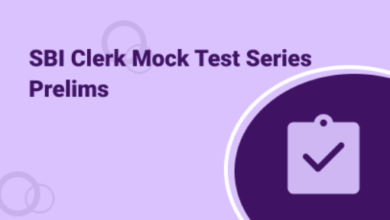Control Function Approach: Unmasking the Invisible Hands in Econometric Analysis

Econometric models often resemble detective work — piecing together clues to reveal relationships hidden beneath layers of noise and uncertainty. Yet, even the most skilled investigator can be misled when vital evidence remains unseen. In econometrics, this “invisible evidence” takes the form of unobserved variables — factors that influence outcomes but evade direct measurement. Enter the Control Function Approach, a sophisticated yet intuitive method that equips economists to handle these unseen forces and correct the distortions they cause in data-driven investigations.
The Puzzle of Endogeneity
Imagine an economist trying to determine whether better education leads to higher income. On paper, the relationship seems straightforward. But beneath that simplicity lies a trap — what if people who pursue higher education also tend to have unmeasured traits like ambition or family support? These unobserved factors influence both education and income, creating what econometricians call endogeneity — the statistical equivalent of a magician’s misdirection.
Endogeneity can arise from several sources: omitted variables, measurement errors, or simultaneous causality. It leads to biased estimates, where the model attributes effects to the wrong causes. Traditional regression techniques, like ordinary least squares (OLS), fail to account for this misdirection. The Control Function Approach was designed to solve precisely this — to pull back the curtain and reveal what’s really driving the results.
See also: Shaping the Future of Healthcare with India’s Leading Pharmacy Education
The Control Function as a Corrective Lens
Think of the Control Function Approach as a corrective lens that helps econometricians see through the fog of unobserved variables. It begins by acknowledging that the regressor — the variable suspected of being endogenous — may be influenced by hidden factors. The approach introduces an additional term, a “control function,” that captures the unobserved part of this relationship.
This method usually unfolds in two stages. In the first stage, the potentially endogenous variable is regressed on all exogenous variables, including an instrumental variable (IV) — a variable correlated with the endogenous regressor but not directly affecting the dependent variable. The residuals from this regression represent the unobserved influence — the “invisible hand” shaping both sides of the equation. In the second stage, these residuals are included as a new variable in the central equation, effectively controlling for the hidden bias.
By doing this, the Control Function Approach does not discard the contaminated information. Instead, it acknowledges it, quantifies it, and adjusts for it — much like a skilled photographer compensating for poor lighting rather than ignoring it altogether.
Econometricians mastering these techniques often develop sharper analytical instincts, similar to what’s honed through advanced analytics training, such as a Data Scientist course in Pune, where statistical reasoning meets real-world problem-solving.
A Real-World Analogy: Untangling the Coffee Conundrum
Consider this: researchers want to determine if drinking coffee improves productivity. The data shows that frequent coffee drinkers appear more productive — a tempting conclusion. However, suppose the more driven employees (an unobserved trait) are also more likely to drink coffee. The variable “drive” isn’t measured but influences both coffee consumption and productivity. Ignoring it leads to overestimating the actual effect of coffee.
The Control Function Approach steps in to resolve this. Researchers initially model coffee consumption as a function of variables such as working hours or office policies, identifying residuals that represent individual “drive.” They then include these residuals in the productivity equation, separating the caffeine effect from personality-driven productivity. The result? A cleaner, more credible estimate of coffee’s actual influence.
This analogy shows the beauty of the method — it doesn’t simply remove bias mechanically but respects the complexity of human behaviour hidden within the data.
Advantages and Subtleties in Application
One of the greatest strengths of the Control Function Approach is its transparency. Each step can be interpreted intuitively, making it easier for researchers to diagnose problems in the model. Moreover, it works well in nonlinear and limited dependent variable models, where traditional instrumental variable methods struggle. This makes it particularly useful in fields like health economics, labour studies, and policy evaluation.
However, the method is not without subtleties. The choice of instrumental variables remains critical. A weak or invalid instrument can introduce new biases instead of removing existing ones. Similarly, misspecifying the functional form of the control equation can distort results. The approach requires both statistical rigour and domain expertise — an appreciation for the story the data tells beyond its numerical expression.
Students who explore advanced econometric techniques in programmes like a Data Scientist course in Pune often find that mastering such methods expands their analytical vision, allowing them to handle data imperfections with confidence rather than fear.
Expanding Beyond Econometrics
While its roots are in econometrics, the philosophy behind the Control Function Approach echoes across modern data science. The central idea — correcting for unobserved influences — reappears in fields like causal inference, machine learning fairness, and policy analytics. For example, in recommendation systems, unobserved user preferences can bias predictions. Techniques similar in spirit to control functions are employed to isolate actual causal effects from confounding correlations.
This cross-disciplinary influence underscores how econometrics and data science share common intellectual DNA. Both are committed to unearthing the truth behind the numbers, ensuring that models don’t just predict well, but explain responsibly.
Conclusion: Seeing the Unseen
In the grand theatre of data, the Control Function Approach serves as a spotlight operator — revealing actors that might otherwise remain hidden behind the curtain of endogeneity. By integrating residual information into the model, it transforms uncertainty into insight and correlation into causation.
Econometric methods like this remind us that good analysis is not just about numbers — it’s about understanding what those numbers hide. When used wisely, the Control Function Approach ensures that our conclusions are grounded not just in statistical precision but in intellectual honesty.
In a world where data drives decisions, such methods don’t merely improve models — they uphold the integrity of empirical reasoning itself.




